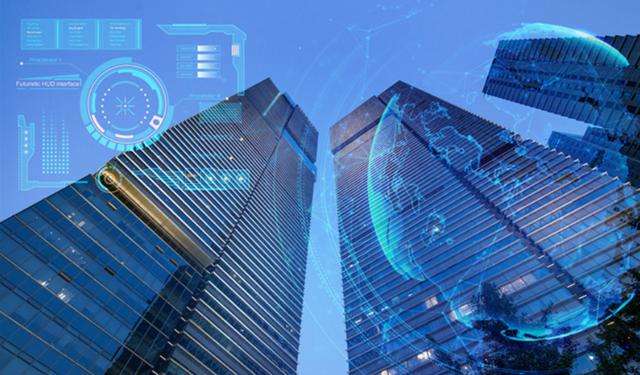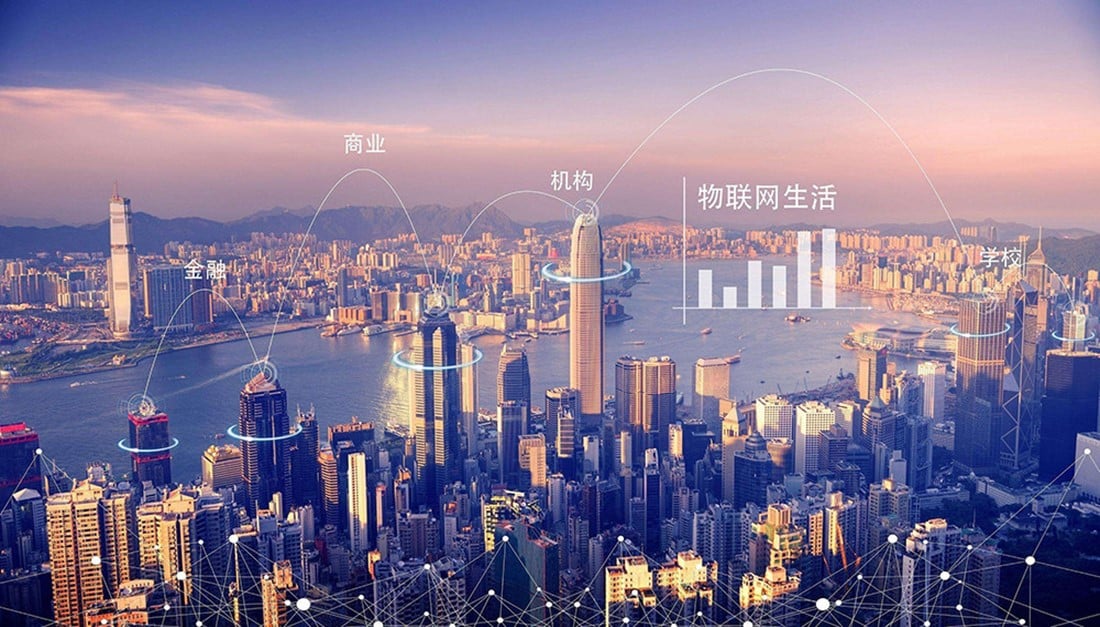New Opportunities and Challenges: How Will Smart Buildings Develop and Be Managed?
07/24/2024
Since the appearance of the first smart building in the United States in January 1984, the concept of smart buildings has evolved and developed to this day. In present day, smart buildings are being vigorously developed worldwide and are even considered an important indicator of a country's level of economic development. Smart buildings are known as intelligent buildings or intelligent structures that integrate advanced technologies from various fields such as architecture, communication, computers, and control, combining them into an optimized whole. The emergence and development of smart buildings are driven by economic, social, and technological factors, and they are an inevitable product of human economic and civilizational advancement.
The Hong Kong government launched the "Smart City Blueprint" in December 2017, which outlines the city's development strategies for becoming a smart city. The blueprint recognizes smart buildings as a key component and emphasizes the use of innovative technologies and data analytics to improve building efficiency, sustainability, and quality of life.
Currently, there is no unified definition of smart buildings. In 2021, the Hong Kong Green Building Council (HKGBC) published the Hong Kong Smart Green Building Design Best Practice Guidebook which states: “A smart green building makes use of information and technology, digital device systems throughout its life cycle from planning, design, construction, operation and maintenance, to demolition, in order to maximize resource and operational efficiencies, enhance wellbeing and promote sustainability for itself, its surrounding infrastructure and the natural environment, and be resilient to change.”
The council also developed the BEAM Plus Certification to promote the construction of sustainable buildings in Hong Kong. It provides a comprehensive assessment framework covering various aspects of building performance, including energy efficiency, indoor environmental quality, and resource management. Many smart buildings in Hong Kong aim to achieve high BEAM Plus ratings, signaling their commitment to green and sustainable development.
Therefore, buildings are not just merely structures; they are also the birthplaces of beauty. Most of our day is spent inside a building, whether it's at home or in the office. The spread of the COVID-19 pandemic has made staying at home the norm. Because of this, we hope to transform buildings into more evolved environments that possess super sensory perception, judgment, and intelligence, thereby improving people's quality of life.

Currently, there are three major hot trends in smart buildings:
IoT and Data Analytics Adoption:
The Internet of Things (IoT) is a widely adopted concept in smart buildings in Hong Kong. IoT devices and sensors are used to collect data on energy consumption, indoor air quality, occupancy patterns, and building systems performance. Advanced data analytics techniques are applied to this data to gain insights, identify optimization opportunities, and enable predictive maintenance, leading to improved energy efficiency and operational effectiveness.
Industry Collaboration:
The development and management of smart buildings in Hong Kong involve collaboration among various industry stakeholders. Building owners, developers, technology providers, and government agencies work together to establish standards, share best practices, and drive innovation in smart building solutions. Industry associations, such as the HKGBC and the Smart City Consortium, play a crucial role in facilitating collaboration and knowledge sharing among stakeholders.
Sustainable Urban Development:
The development and management of smart buildings align with Hong Kong's broader goals of sustainable urban development. By incorporating energy-efficient technologies, renewable energy sources, and smart systems, smart buildings contribute to reducing carbon emissions, conserving resources, and enhancing the overall resilience and livability of the city.
Future Directions for the Development and Management of Smart Buildings:
Smart buildings should not only be limited to the physical environment; they should be dynamic structures that support office, living, cultural, and commercial activities—a comprehensive service center. In the new era, new technologies infuse smart buildings with vitality. In the future, buildings will be transparent, comfortable, green, intelligent, human-centered, and vibrant.
Transparent Management:
Smart buildings provide integrated management information platforms for building planning, investment, and asset management. By using imperceptible discovery and integration technologies, smart devices within the building can be automatically identified and seamlessly connected to various building subsystems. This allows the information of smart devices to be collected and analyzed in real-time, providing transparency in building management and operations. Building managers can make data-driven decisions and optimize resource allocation.
Comfort and Wellness:
Smart buildings should prioritize occupant comfort and wellness. Advanced sensors can monitor and adjust environmental conditions such as temperature, lighting, and air quality in real-time, creating a comfortable and healthy indoor environment. Personalized settings and preferences can be configured, and occupants can have control over their immediate surroundings through intuitive interfaces and mobile applications.
Green and Sustainable:
Sustainability is a key focus for smart buildings. Energy-efficient systems and renewable energy sources can be integrated to reduce the building's carbon footprint. Smart grids and energy management systems enable efficient energy usage, load balancing, and demand response. Water conservation measures, waste management systems, and green spaces can also be implemented to promote environmental sustainability.
Intelligent Automation:
Automation plays a crucial role in smart buildings. IoT devices and sensors enable the collection of real-time data, which can be analyzed to optimize building operations. Intelligent automation systems can regulate energy usage, monitor equipment performance, and detect faults or anomalies. Predictive maintenance algorithms can anticipate equipment failures, reducing downtime and improving efficiency.
Human-Centered Design:
Smart buildings should prioritize the needs and experiences of occupants. User-centric design principles can be applied to create intuitive interfaces, seamless connectivity, and personalized experiences. Occupants can interact with the building through voice commands, mobile apps, or wearable devices, enabling convenient access to services, personalized settings, and efficient navigation within the building.
Vibrant Ecosystem:
Smart buildings can be designed as vibrant ecosystems that foster collaboration, innovation, and community engagement. Shared spaces, collaborative work areas, and interactive technologies can encourage interaction and knowledge sharing among occupants. Integration with smart city initiatives can further enhance connectivity and access to urban services, creating a dynamic and inclusive environment.

Smart Solutions by Sea Point China:
In addition to the trends mentioned above, innovative smart systems by Sea Point further address specific aspects of smart building operations. Some of Sea Point’s notable solutions include:
Innovative Washroom Management Systems:
The Innovative Washroom Management Systems integrates IoT sensors and data analytics to monitor washroom occupancy, usage patterns, and supply levels of consumables. Real-time data enables efficient maintenance and cleaning schedules, ensuring a clean and well-maintained washroom environment for occupants while optimizing operational resources.
Digital Signage Systems:
Sea Point offers the Digital Signage Systems that enhances communication and information dissemination within smart buildings. These systems utilize interactive displays and multimedia content to provide real-time updates, announcements, and directions. Monitors can be integrated with building management systems to display energy consumption information, emergency alerts, and wayfinding instructions, improving overall occupant experience and engagement.
Hospitality Automation Solutions:
Sea Point China specializes in Food and Beverage (F&B) automation solutions and their systems enable self-service ordering, automated payment, and intelligent inventory management in food and beverage establishments within buildings. By leveraging technologies such as smart locker systems, self-service kiosks, mobile apps, robots, and kitchen automation, they enhance operational efficiency, reduce waiting times, and streamline F&B operations.
Wayfinding Systems:
Sea Point China offers advanced Wayfinding Systems that simplify navigation and improve accessibility and improve efficiency in navigating complex building layouts within smart buildings. These systems utilize interactive maps, indoor positioning technologies, and intuitive interfaces to guide occupants to their desired destinations. They can be integrated with mobile applications or installed as standalone kiosks, providing real-time directions, points of interest, and updates on events or emergencies.
Power of Precision in Smart Buildings
In the ever-evolving landscape of Hong Kong, smart buildings are revolutionizing our lifestyles, work environments, and interactions with the world around us. Leading the way in this transformative journey is Sea Point China Limited, an esteemed provider that emphasizes the "Power of Precision in Smart Buildings."
With a strong focus on attention to detail and precision, Sea Point delivers smart building management solutions that result in superior outcomes, enhanced efficiency, and a more comfortable and secure environment for occupants. By harnessing innovative technologies, Sea Point is at the forefront of revolutionizing building management and elevating the overall occupant experience.





